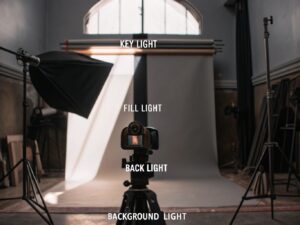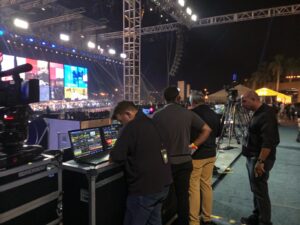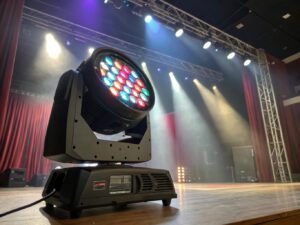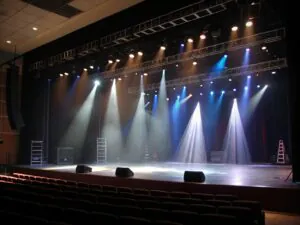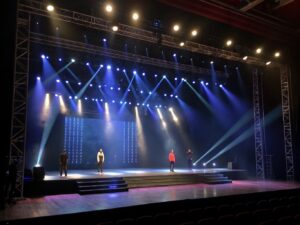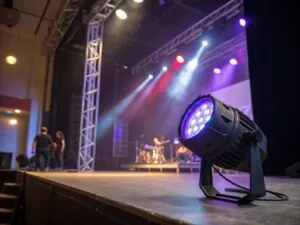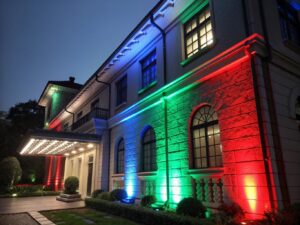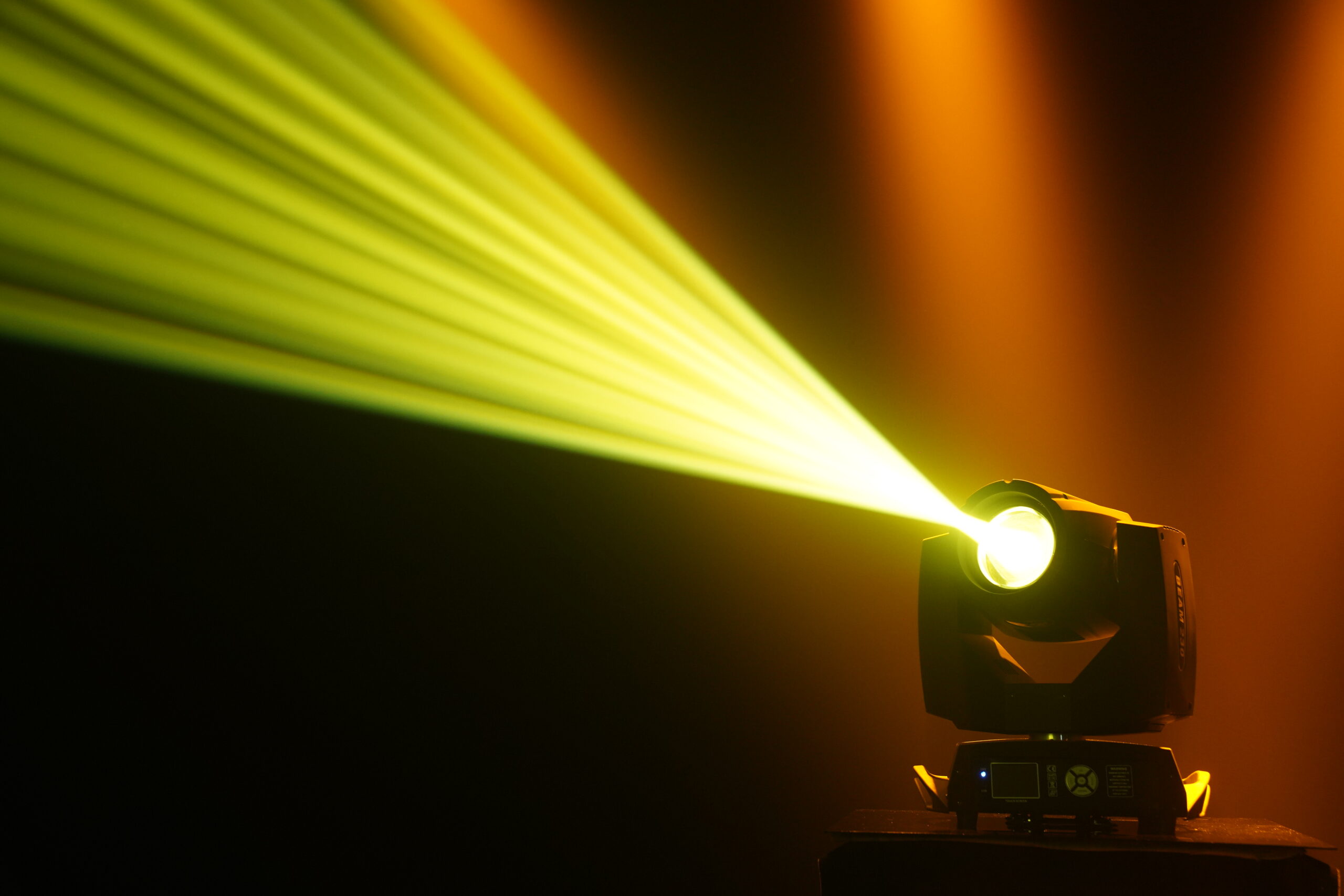
How Can BEAM Moving Head Lights Truly Transform Your Stage Design?
Your stage lighting looks flat, and the effects get lost in the fog. You need a fixture that cuts through everything to create real, unforgettable impact.
BEAM moving head lights are the ultimate solution. They produce an intensely sharp, narrow, and powerful column of light perfect for creating dramatic mid-air effects, pinpointing performers, and adding a high-energy feel to any event. They are true workhorses for visual impact.
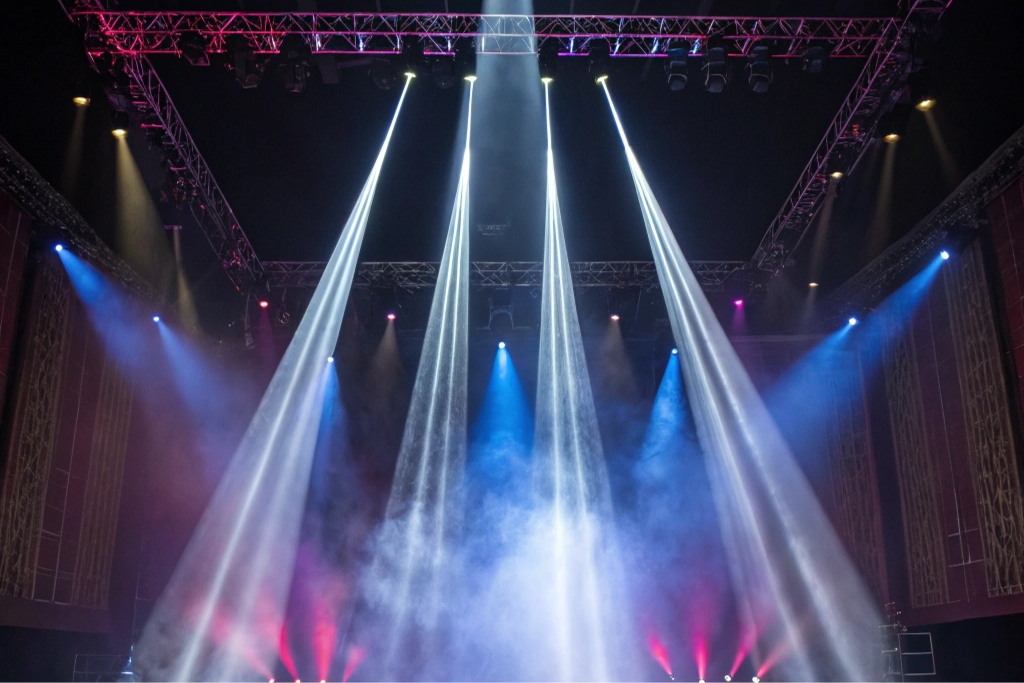
In my 19 years in this industry, I've seen a lot of lighting technology come and go. The BEAM light, however, has remained a staple for a powerful reason. It’s not just about being bright; it’s about using that brightness with precision to create moments the audience will never forget. I've built my company, Monalight, on the idea that quality and innovation are everything. The BEAM light is a perfect example of this. Let's break down what makes these fixtures so special and how you can use them to make your next show legendary.
What Exactly Is a BEAM Moving Head Light?
Confused by all the moving head types? Spot, Wash, BEAM... it can be a lot. Choosing the wrong fixture can completely undermine your lighting design's intention.
A BEAM light is a specialized moving head designed to create a very tight, razor-sharp, and long-reaching beam. Unlike a Spot or Wash, its main job is not to light a surface or project complex images, but to create stunning, solid beams in mid-air.
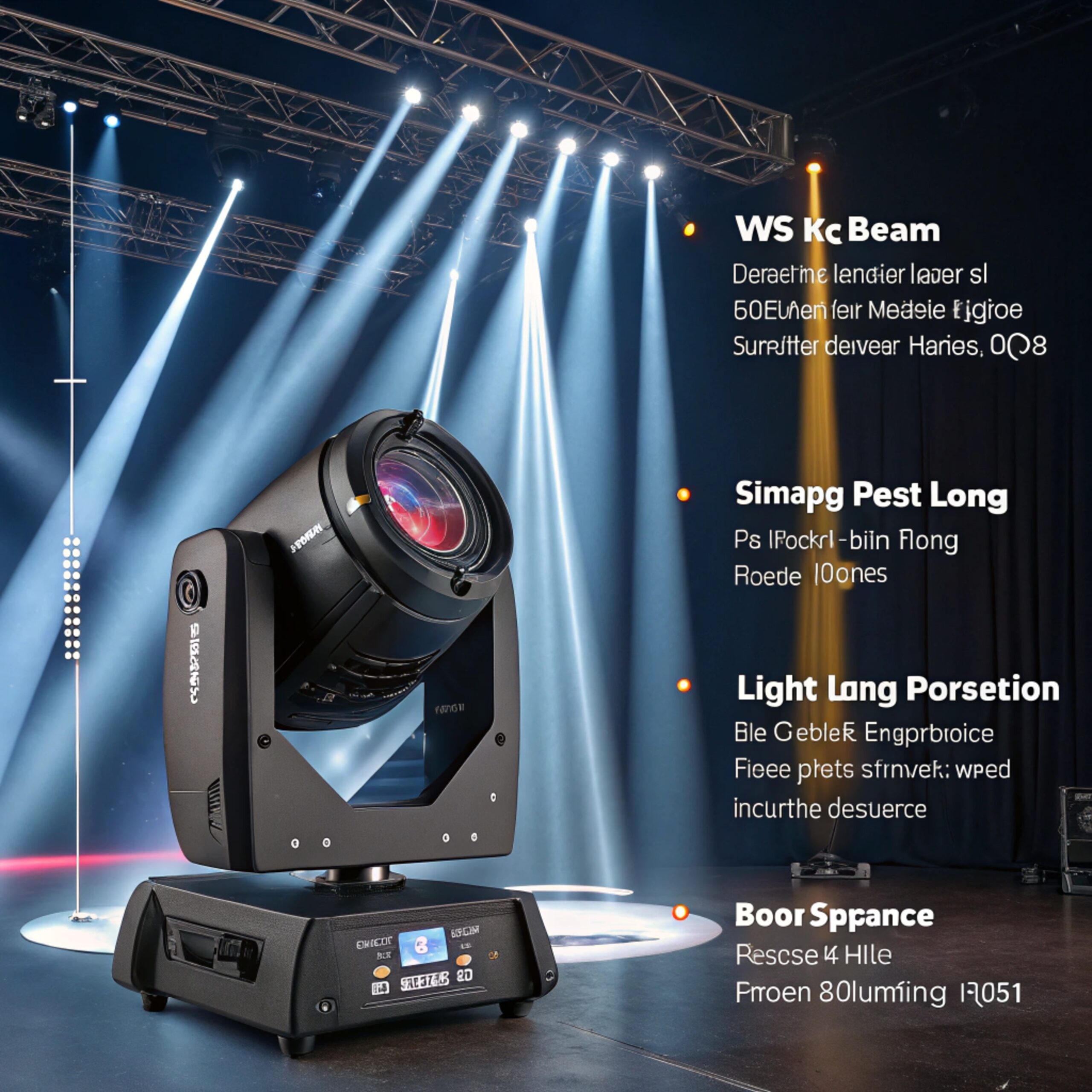
The magic of a BEAM light comes from its unique optical design. It's engineered to produce an extremely narrow beam, often less than 5 degrees wide. Think of it like a controllable, colorful searchlight for the stage. Its purpose is to be seen in the air. I remember one festival where we used BEAMs to cut through heavy evening fog, creating these incredible light tunnels over the crowd. The energy was electric. That's the power of a true BEAM effect. This is different from its cousins, the Spot and the Wash light.
Here’s a simple breakdown to help you distinguish them:
| Feature | BEAM Light | SPOT Light | WASH Light |
|---|---|---|---|
| Primary Use | Mid-air effects, sharp beams | Projecting patterns (gobos), highlighting | Broad area color coverage |
| Beam Angle | Very Narrow (<5°) | Medium to Wide (15°-30°) | Very Wide (>30°) |
| Edge | Hard, defined | Can be soft or hard (focus) | Soft, diffused |
| Best For | High-energy concerts, clubs | Theatrical productions, logos | Scenery, backdrops, general stage color |
Why Should Your Event Use BEAM Lights?
Do you need your lighting to stand out? Are you worried your effects will get lost in a busy visual environment? You need a fixture that guarantees visibility.
You should use BEAM lights for their unmatched brightness and ability to create high-impact aerial effects. They cut through smoke, haze, and even other stage lights effortlessly, ensuring your design is always visible and powerful. They are also efficient and built to last.
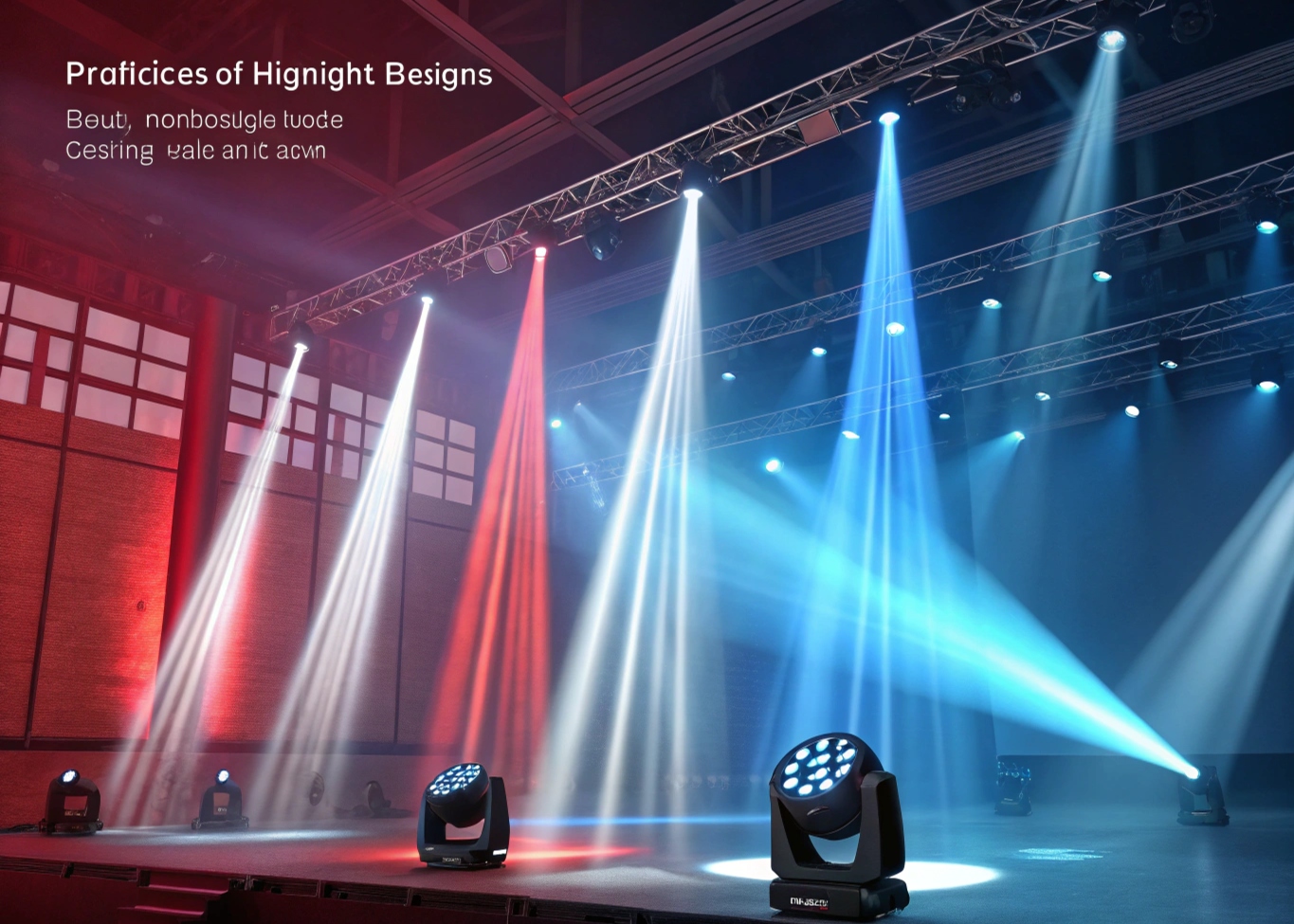
As a technician, you know that stability and performance are everything. Let's talk about why BEAMs are such a smart choice. First, their unparalleled brightness is not just about raw power; it's about efficiency. Modern BEAMs use advanced lamp or LED sources that create incredible luminance, slicing right through atmospheric haze instead of just illuminating it. This means your effects look sharp and intentional, even in the largest arenas.
Second, they are built for high-impact “spotlight” and aerial scanning effects. You can create cages of light around a performer, build massive geometric shapes over an audience, or use fast movements to energize a crowd. Finally, we build our lights with efficiency and durability in mind. "Quality is life" is our core philosophy at Monalight. A good BEAM light should be a reliable partner that withstands the rigors of touring and frequent use, delivering a consistent, powerful performance every single night.
What Are The Key Features And Creative Applications?
A light is just a light, right? Wrong. The features inside a BEAM light can unlock endless creative possibilities, but they can also seem complex at first glance.
The key features of a BEAM light are its color wheel, gobo wheel, pan/tilt movement, and prism/strobe effects. Combining these allows you to paint the air with color, add texture, create dynamic motion, and build explosive energy for your show.
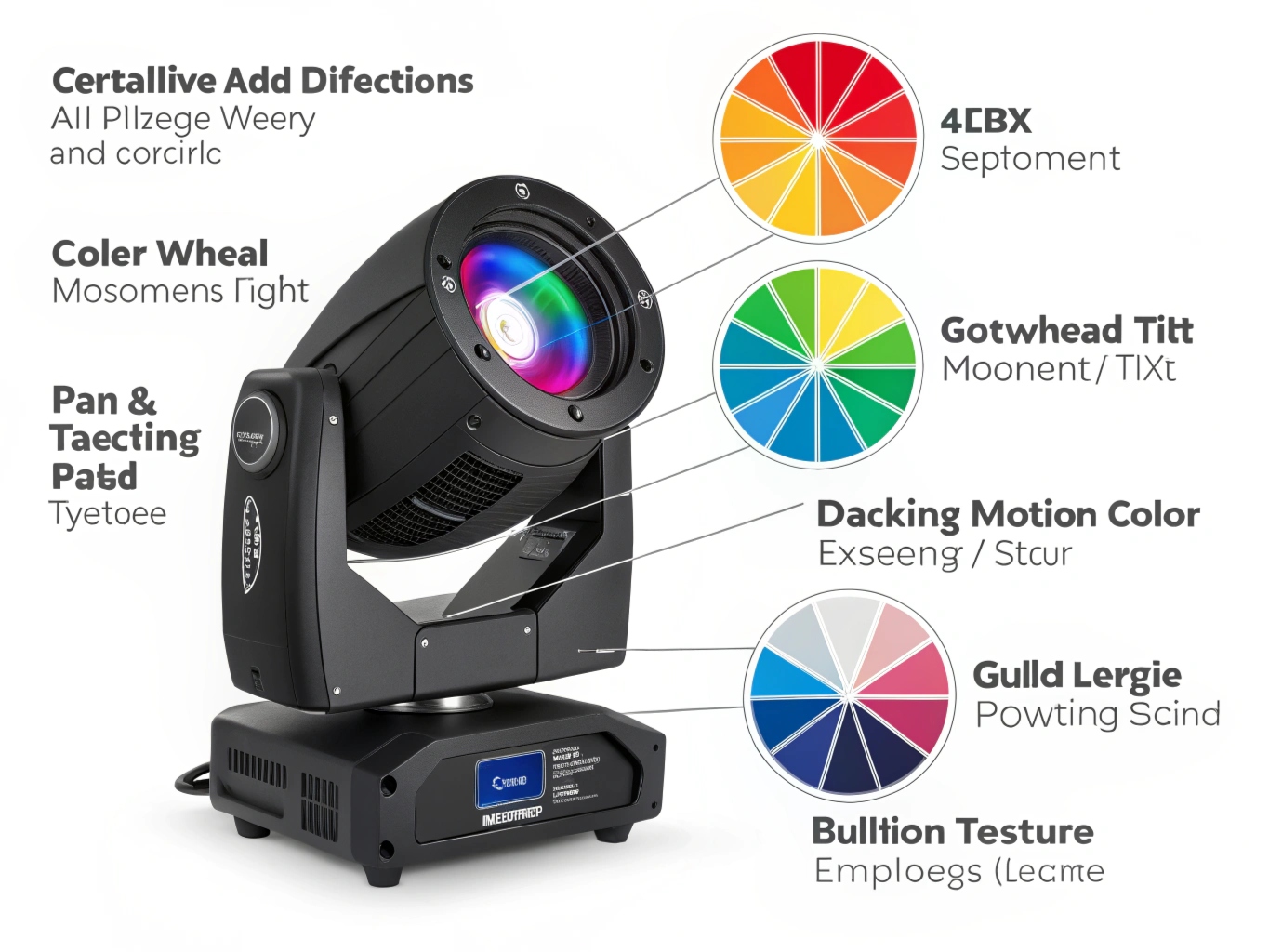
Let's dive into the creative tools packed inside a BEAM fixture. Understanding them is key to unlocking your design potential.
- Color Wheel & Color Mixing: This is your primary tool for setting the atmosphere. Most BEAMs have a wheel with rich, saturated colors that can be snapped between instantly for high-energy chases or scrolled through for smooth transitions.
- Gobo Wheel: While a Spot light uses gobos for detailed images, a BEAM light uses them to add texture. Think of a gobo with multiple pinholes; it turns a single solid beam into a shower of smaller beams. It’s about shaping the light in the air.
- Pan/Tilt Movement & Speed: This is the "moving" in moving head. Fast, precise motors are critical. For a technician, nothing is more frustrating than a light that misses its mark. We focus on high-quality motors so the light is not only fast but also returns to the exact same position every time.
- Prism & Strobe: The prism is a secret weapon. It takes your single beam and multiplies it, instantly turning one ray of light into 3, 8, or even 24. It makes the effect feel huge. And of course, the strobe function adds that classic, high-energy pulse essential for dance music and dramatic moments.
In What Situations Do BEAM Lights Perform Best?
Have you ever used the right light in the wrong place? It’s a waste of time and your design budget. Knowing where a BEAM light truly shines is crucial.
BEAM lights excel in high-energy environments where dramatic mid-air effects are needed. They are perfect for concerts, music festivals, nightclubs, and large-scale corporate events. They also add a modern, dynamic feel to stage productions and contemporary church services.

A BEAM light is versatile, but it’s most powerful in specific applications where its unique characteristics can be fully appreciated. After years of supplying fixtures for all kinds of events, I've seen them deliver the biggest impact in these settings:
- Concerts and Music Festivals: In large venues, you need light that can travel a long way and not get washed out. BEAMs are perfect for creating huge looks that cover the entire audience and reach the back of the arena.
- Nightclubs and DJ Sets: Here, speed and intensity are king. The tight beams and fast movements of BEAM lights are the foundation of modern club lighting, creating an immersive and energetic environment.
- Stage Productions and Corporate Events: A BEAM light can be used for dramatic reveals, framing a keynote speaker, or adding a "wow" factor to a product launch. Their sharp, architectural lines add a sleek, professional touch.
- Churches and Modern Worship: Many modern churches use BEAMs to create powerful visual experiences during worship. Uplifting moments can be enhanced by beams of light pointing skyward, creating a sense of awe and wonder.
How Do You Maintain Your BEAM Lights for the Best Performance?
Your lights look dim and their movement is jerky. Neglecting basic maintenance kills performance, shortens the lifespan of your valuable gear, and compromises reliability.
To maintain peak performance, regularly clean the optical lens and external housing. Know when to service or replace your light source, whether it's a lamp or an LED. And always perform essential safety checks on power and rigging before every show.
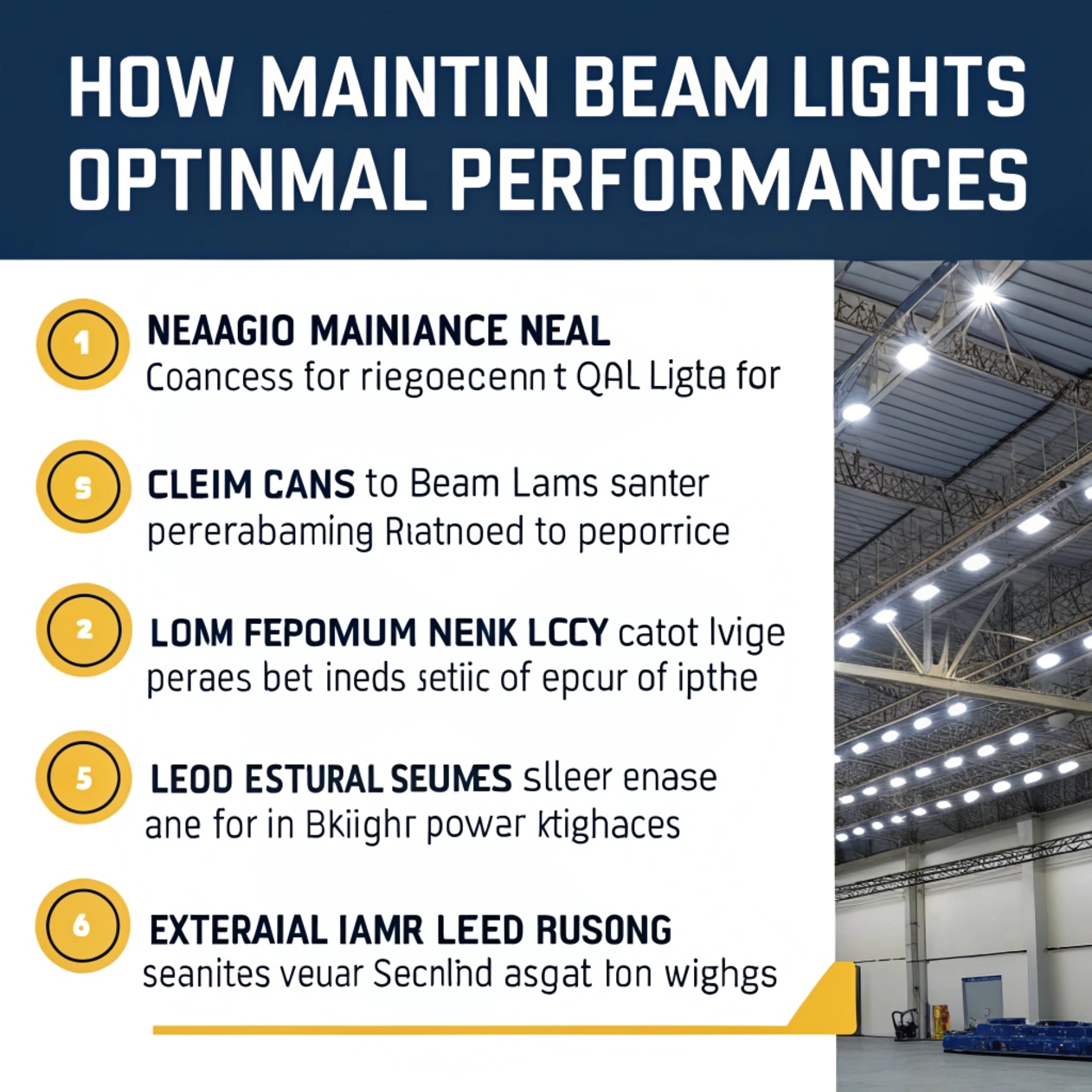
As a technician, you are the guardian of the gear. Keeping your BEAM lights in top condition is essential for delivering a flawless show every time. It's a concern I hear often, especially regarding brightness and stability. Here is my simple guide based on nearly two decades of experience:
- Clean Optics and Housing: Dust and haze fluid residue are the enemies of brightness. A dirty lens can reduce light output significantly. Use a soft, lint-free cloth and a designated lens cleaner to gently wipe the front lens before shows. Also, keep the air vents clear to prevent overheating.
- Know Your Light Source: If you have a lamp-based BEAM, track its hours. They have a limited lifespan and will dim over time before they fail. For LED-based BEAMs, the lifespan is much longer, but output can still decrease after thousands of hours. Keeping a simple log helps you anticipate issues like light fade.
- Necessary Safety & Power Checks: This is non-negotiable. Before rigging, always check your clamps, safety cables, and power connectors. Ensure you are providing stable voltage. Fluctuations in power can damage the sensitive electronics inside and cause performance issues. A reliable light starts with a reliable setup.
How Can You Choose the Right BEAM Light for Your Needs?
The market is flooded with options. Choosing the wrong BEAM light can mean wasting your budget on a fixture that's too weak, too complex, or unreliable.
To choose the right BEAM light, first consider your venue size, budget, and DMX control system. Then, evaluate the fixture's brightness, feature set, and the manufacturer's reputation for reliability. A well-chosen light is an asset, not a liability.

Selecting the perfect BEAM light feels like a big decision, but it becomes much simpler when you break it down. I always advise my customers to think about these key factors before they buy.
| Factor | What to Consider | My Advice |
|---|---|---|
| Venue Size | How far does the light need to throw? | For large festivals, you need a powerful lamp-based or high-wattage LED BEAM. For a small club or stage, a more compact and efficient LED model is a perfect choice. |
| Budget | What is the initial price vs. the long-term cost? | Don't just look at the sticker price. Think about the total cost of ownership. A reliable fixture from a trusted brand saves you money on repairs and downtime. |
| Control System | Is it compatible with your console? How complex is it? | Check the fixture's DMX-channel profile. More channels can offer more refined control but also complicate programming. Choose what fits your technical workflow and comfort level. |
At Monalight, we design fixtures for professionals like you. For example, our Monalight Beam 380W is a workhorse for clubs and medium stages, offering incredible speed and a sharp beam in a compact body. For massive shows, our Monalight Beam 460W delivers the power and features needed to command an arena. It's all about matching the right tool to the job.
Conclusion
BEAM moving head lights are essential tools for creating high-impact, professional shows. Choose wisely, maintain them well, and they will transform your stage with powerful, sharp light.
You may also be interested in:
